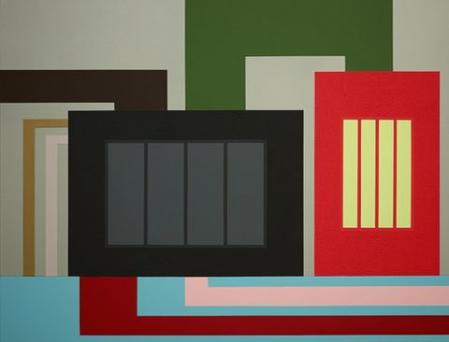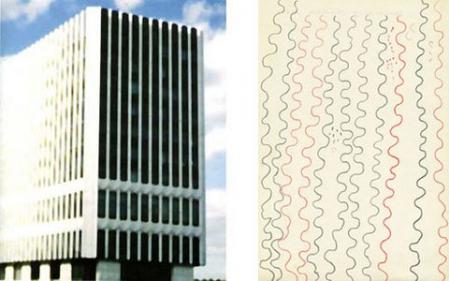dis order – Total Order
Basic patterns shape our everyday lives both in the form of planned order structures of our built environment and by means of social orders. In the 1980s the symbolic quality of patterns returned to the fore as an artistic topic of discussion in the context of postmodernism. Many artists made ironic use of geometric orders and addressed themselves to their significance for our lives.
Grids in the space
Industrial construction has made the grid in the third dimension a characteristic structural form. Steel frames and reinforced concrete skeletons are not the only traces of industrialization in cities; façades are also made of reproducible series modules. Post-War Modern architecture has been vilified in public debate as urban mutilation since the 1980s. Its minimalist austerity is considered monotonous, yet photography makes its façades look like Concrete and Minimal art. The abstract patterns of these façades have fascinated photographers including Andreas Gursky, Thomas Struth and Heidi Specker.
Ornament of the masses
It is not just objects, but also human bodies that can be subject to orders. The military for instance lines its marching soldiers up in rows in order to make controlled use of them. This rationalization of human life can be found in many other spheres today, such as in the streamlining of work processes or in bureaucracy. Michal Rovner and Atelier van Lieshout take a critical stance against this ordering of life in their works, whereas Denkmal einer Barrikade (Monument to a Barricade) shows resistance to regimental orders.
The language of patterns
Can people from any culture understand abstract Modernist art by concentrating on “pure” seeing? Post-colonialism brought with it doubts as to the claim of the universal validity of modernity. When artist Michael Buthe travelled to Morocco in the 1970s, he did not remain simply a tourist or researcher. He learned the craft of dyeing in Marrakesh and became familiar with the mystical dances of the Berbers.
After meeting the indigenous tribe of the Yanomami, in 1978 artist Lothar Baumgarten brought back a collection of patterned drawings to Europe produced by the Yanomami themselves. Until their encounter with Baumgarten they had drawn patterns, often abstract circles, sometimes stylized leaf shapes, exclusively on objects of utility or their own bodies. Now they were drawing for the first time on a base without function: a sheet of paper.
Next Chapter: Temporal Orders in Moving Images …
Back to dis order …
Share on



